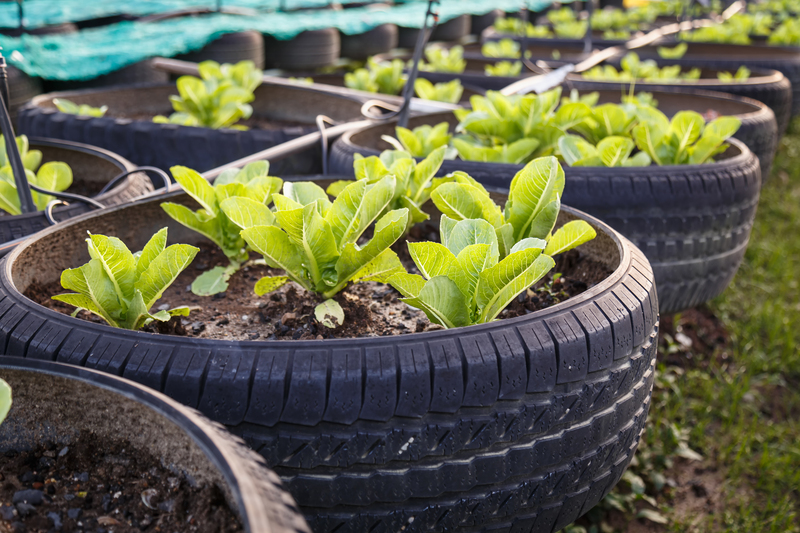From Kitchen to Recycling: Pot and Pan Disposal Guide
Need to get rid of your old cookware? Whether you're upgrading your non-stick pans, decluttering your cupboards, or simply making way for a more eco-friendly kitchen, disposing of unwanted pots and pans responsibly is more important than you think. This comprehensive guide will walk you through every step--from kitchen cabinets to recycling centers--so you can declutter with confidence and care.

Why Proper Pot and Pan Disposal Matters
Pots and pans might seem insignificant compared to bigger appliances, but how you dispose of them can have a significant impact on the environment. Improper disposal contributes to landfill waste, potential leaching of metals and chemicals into the soil, and missed opportunities for recycling valuable materials. Not only is sustainable disposal important for the planet, but it can also benefit your community and even save you money.
- Reduces landfill waste
- Supports metal recycling industries
- Helps those in need through donation
- Promotes responsible consumer habits
Types of Pots and Pans: A Recycling Perspective
Before deciding on your pot and pan disposal method, understand what your cookware is made of:
- Stainless Steel: Durable, widely recyclable metal
- Aluminum: Lightweight, often accepted by recycling centers
- Copper: Valuable and highly recyclable, especially for scrap yards
- Cast Iron: Heavier but very recyclable or reusable
- Non-Stick (Teflon-coated): Requires special handling due to chemical coatings
- Ceramic or Glass: Rarely recyclable through regular curbside programs
Knowing the materials used in your old pots and pans will determine the best path for their disposal or recycling.
The Environmental Impact of Cookware Waste
Every year, millions of pots and pans are thrown away, adding to the growing landfill crisis. Metals take hundreds of years to decompose, potentially releasing toxins as they break down. Non-stick coatings, if not handled properly, can also release harmful perfluorinated compounds into the environment. By choosing the most responsible disposal method for pots and pans, you help conserve resources and reduce pollution.
First Step: Can Your Pots and Pans Be Reused?
Before rushing to dispose of your old cookware, consider whether it can be reused or repurposed. Many pots and pans still have life left in them and can offer value in other settings.
Options for Reuse
- Donate to Charity: Local shelters, soup kitchens, and thrift stores often accept gently used cookware.
- Pass Down: Family, friends, or college students may appreciate your hand-me-downs.
- Repurpose at Home: Old pans can be used for gardening, as pet food dishes, or even transformed into planters or art projects.
Tip: Always check with the donation center about their acceptance policies before dropping off cookware, especially if it's non-stick or damaged.
How to Recycle Pots and Pans
Recycling is the best solution for metal cookware that can't be reused or donated. However, recycling pots and pans is different from tossing cans into your curbside bin. Here's how to ensure your pots and pans are recycled the right way:
1. Assess Material Composition
- Stainless steel and aluminum cookware are most widely accepted by metal scrap yards and recycling centers.
- Cast iron is extremely recyclable, but heavy and may require special drop-off arrangements.
- Non-stick pans pose challenges because recycling facilities may not accept items with Teflon or other coatings unless the coating is removed.
- Ceramic and glass cookware are typically not accepted at standard recycling plants.
2. Remove Non-Metal Parts
Detach any plastic handles, glass lids, or silicone grips. Most scrap metal buyers require only the metal components.
3. Clean Your Cookware
A quick wash removes food residue, making the recycling process easier and more sanitary. Dirty pans can sometimes be rejected at recycling centers.
4. Find a Local Scrap Metal Yard
- Contact your local recycling center or search for "metal recycling near me."
- Ask if they accept cookware, what condition is required, and if non-stick pans are accepted.
Good to know: Metal recycling centers may even offer a small payout for heavy items like cast iron pans or copper cookware.
5. Utilize Municipal Recycling Events
Some communities host annual or periodic recycling drives specifically for "hard to recycle" household items. Pots and pans often qualify. Check your city or county's waste management website for upcoming events.
What If My Pots and Pans Aren't Accepted for Recycling?
If your non-stick, ceramic, or glass cookware can't be recycled locally, there are still responsible disposal options:
- Mail-in Recycling Programs: Some brands and companies now offer take-back or mail-in recycling for their products. Search the manufacturer's website for details or inquire at major retailers.
- Household Hazardous Waste Events: Non-stick pans with damaged coatings may be considered hazardous waste in some areas. Local HHW collections may accept them--check event guidelines carefully.
- Upcycling Crafts: Get creative--turn cracked ceramic dishes into mosaic art or plant saucers, or paint non-stick pans for wall decor (just don't use for food again).
Special Handling for Teflon-Coated (Non-Stick) Cookware
Disposing of non-stick pans requires extra care, especially if Teflon or similar coatings are damaged or peeling. Although the metal underneath may be recyclable, it's best to:
- Contact your local landfill to ask about special collection requirements
- Check with major cookware retailers (some, like TerraCycle, offer recycling programs for Teflon pans)
- If no options exist, dispose of as general waste, but never incinerate non-stick cookware as it can release harmful fumes
Eco-Friendly Disposal: Donation and Upcycling
Where to Donate Old Cookware
- Thrift Stores: Goodwill, Salvation Army, and local shops often accept usable cookware.
- Community Centers: Some accept cooking tools for donation programs.
- Refugee Resettlement Groups: These organizations may assist newcomers in setting up kitchens.
- Schools and Camps: Art departments or summer camps might appreciate extra supplies for non-food uses.
Upcycling Ideas for Old Pots and Pans
- Garden Use: Use as outdoor planters or birdbaths.
- Home Decor: Turn into creative wall hooks, clocks, or rustic lighting fixtures.
- Kids' Crafts: Make musical instruments for children's crafts.
- Storage: Use for organizing small items in garages or workshops.
Upcycling gives your cookware new life and keeps it out of the waste stream longer--a fun, eco-friendly step before recycling or disposal.
How to Tell When It's Really Time to Replace a Pot or Pan
Not all cookware needs to be disposed of just because it's old. However, you should definitely retire your pots and pans if you notice:
- Warped, cracked, or broken surfaces
- Scratched or heavily worn non-stick coating
- Rusted or corroded metal disrupting cooking performance
- Loose handles or missing parts that can't be repaired
Always prioritize safety--damaged pots and pans can pose health hazards in your kitchen.
Pot and Pan Disposal: FAQ
Can you put pots and pans in the recycling bin?
Most curbside recycling programs do not accept cookware with regular household recycling. Always check your local guidelines and opt for a scrap metal facility unless your municipality specifically states otherwise.
What about pots and pans with plastic parts?
Remove all non-metal parts before recycling your cookware. If you can't remove them, check with the recycling center about their requirements. In some cases, they will accept items as-is, but may not offer compensation for items with non-metal attachments.
Can you donate non-stick pans?
Donation centers will typically only accept non-stick pans in good, clean condition with intact coatings. If the surface is scratched or damaged, consider upcycling or recycling instead.
Is it safe to throw cookware in the trash?
As a last resort, yes, but it's not the most responsible choice. Pots and pans in landfills can take decades or centuries to decompose. Always donate, reuse, or recycle whenever possible.
Pot and Pan Disposal: A Quick Reference Table
| Cookware Type | Donation | Recycling | Trash | Upcycling |
|---|---|---|---|---|
| Stainless Steel/Aluminum | Yes (if in good shape) | Scrap yard/recycling center | Only as last resort | Yes |
| Cast Iron | Yes | Scrap yard/recycling center | Rarely needed | Yes |
| Non-Stick (Teflon) | Only if coating is undamaged | Special programs or manufacturer | Yes, if no recycling options exist | Add for non-food uses |
| Ceramic/Glass | Yes | Rarely, check specialty recycling events | Yes, if not reusable | Yes |

Responsible Cookware Disposal: Steps for a Clean and Green Kitchen
- Sort cookware by material and condition. Clean thoroughly.
- Set aside reusable pieces for donation or passing on.
- Remove non-metal parts if recycling.
- Contact local scrap metal/recycling centers to verify drop-off policies.
- Seek manufacturer take-back programs for specialty items like non-stick pans.
- Get creative with upcycling for cookware that isn't fit for the kitchen or recycling stream.
- Dispose as a last resort--only toss in the trash when every other option has been tried.
Conclusion: Do Your Part--Take Cookware Disposal Seriously
From your kitchen to the recycling center, the journey of pot and pan disposal matters more than ever. By making informed, responsible choices, you help save resources, reduce waste, and support a healthier environment. Donate what you can, recycle what you can't, and upcycle creatively. Safe, sustainable pot and pan disposal is a small action with big impact--start today, and lead by example in your community!
Remember, every pan counts. Together we can keep cookware out of landfills and give every pot and pan a greener second life!